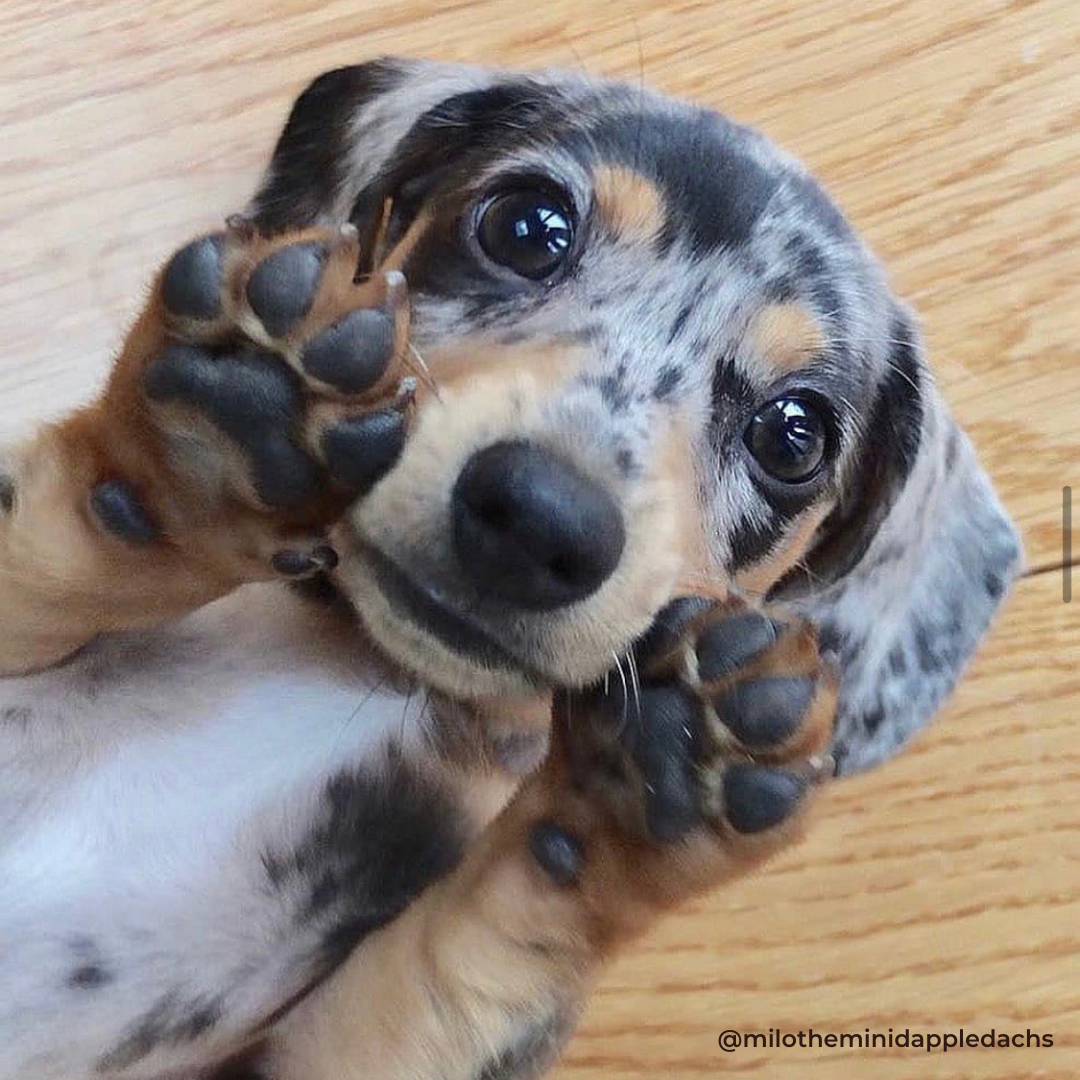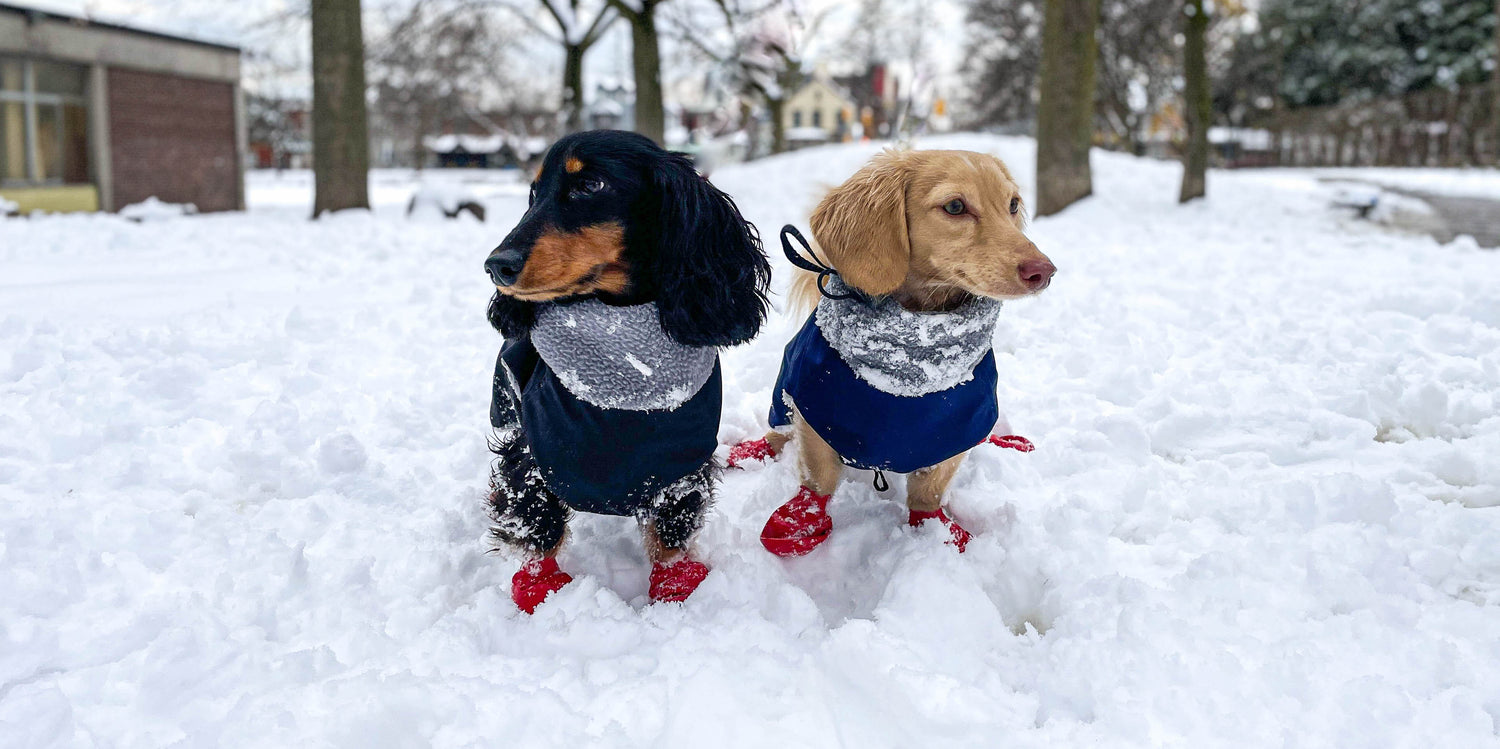Potty training any puppy is far from easy; as soon as you think that it’s all sorted, they have 5 accidents in one day. It’s totally fine and also completely normal but it’s hard not to feel a little disheartened when it happens to you.
However, potty training a dachshund is another beast. These dogs are known for being stubborn and picky. They hate going outside if it’s too cold or too hot or too wet or too snowy or anything other than ideal...and even then it’s a gamble.
First thing you should know is that puppies technically don’t have full bladder control until they’re about 6 months old. So don’t be too hard on yourself or your puppy is 4 months old and still having accidents in the house. Even after 6 months old...they might have accidents and that’s totally okay. Cut you and your pup some slack and remember, like my Hannah Montana says: “everybody makes mistakes”.
As a preventative measure, know that your puppy will probably need to pee right after they:
-Wake up from a nap
-Eat
-Drink
- Play
So as a good preventative measure, take them out every time one of those four things happens. Other than that, there are lots of ways to make your potty training journey a more successful one.
1. Schedule Schedule Schedule
Your schedule will be your best friend. It will be the key to your potty training success. Using a schedule will be the way you are able to know when your puppy needs to go out, when they’re most likely to pee and poop and it also helps to know if something is abnormal. Not to mention, dachshunds do very well on a strict schedule.
To start your schedule you have to start by recording. Peed outside? Write it down. Peed on their pad? Write it down. Accidents in the house? You get the point. This may seem daunting but I’ve created a detailed schedule page in our puppy planner that you can download and fill out as you need it. It makes it super easy to record when your puppy pooped or peed so you can see at a glance what your puppies specific patterns tend to be. The more detailed you get with this, the better. I was literally recording what my puppy was doing down to the minute. (You don’t have to go this crazy, but to each their own)
**It may also help to write down whether the puppy was running around, sleeping or had just finished eating when they had to go**
2. Start with 15 minutes.
I know it sounds daunting but when you’re getting to know your puppies schedule and their bladder habits, start by taking them outside (or to their designated toilet spot) every 15 minutes when they’re awake. They might not use it every time but give them 2-3 minutes on the spot and as soon as they do go pee or poop, make sure to mark it with a ‘yes’ or ‘good dog’ or whatever marker word you’re using and give them a treat! Make sure to mark down when they go to the bathroom on your tracker sheet! After a few days of trying every 15 minutes when your puppy is awake, you’ll start seeing a pattern and you’ll be able to lengthen the time between potty breaks.
3. Accidents will happen
One day you’re going to be so happy because you’ll realize your puppy hasn’t had an accident in a whole day! You SHOULD celebrate because your puppy is getting there, but be prepared that they may very well have an accident and that’s o-k. Remember, your puppy really doens’t have bladder control until 6 months old and even after that accidents are not only possible, but normal. If/When they do, just take a deep breath, and move on. You’re not starting from zero, it was just a tiny blip in the greater scheme of things. The quicker you get past your pup having accidents, the easier the whole process will be.
4. Watch for the little signs
Preventative potty training is the best type of potty training which is why going outside every 15 minutes until you establish a routine is so effective. When/if your puppy does have an accident, it’s most likely that you missed an opportunity to take them out, or maybe they gave off a little sign that they had to pee or poop. As humans, we don’t see these signs naturally and it takes some time to start recognizing these in your dog. They vary slightly from pup to pup but there are a couple signs to watch out for when your puppy is about to pee or poop.
- They might randomly break away from a play session that they were so actively part of 2 seconds ago…if they just randomly walk away, they’re probably not bored, they might be looking for a spot to pee.
- Walking in an “S” pattern or circle - MOVE QUICK this one is often right before they’re about to squat so you have about a millisecond to pick them up and get them to their pee spot for a successful pee.
5. Use a Bell or Buzzer at the door
Buzzer training has been an incredibly helpful tool for so many people to help dogs communicate when they have to go out. The idea of bell training is that your dog will ring the bell at the front door when they have to go out. This is a little more advanced so wait until your dog has a good grasp on where they’re supposed to ‘go’. Check out our whole post on bell training here for more tips and tricks!
Your puppy will rarely just squat and pee in the middle of the floor without giving off at least one sign of needing to pee so if it happens, know that they just didn’t know any better. When they’re young, they’re not doing purposely to be naughty so just be patient and know that they will get there eventually. There are rare times that your puppy might have larger issues like bladder infections so if you feel that something a little more is at play, make sure to bring it up with your vet or a certified dog trainer.


